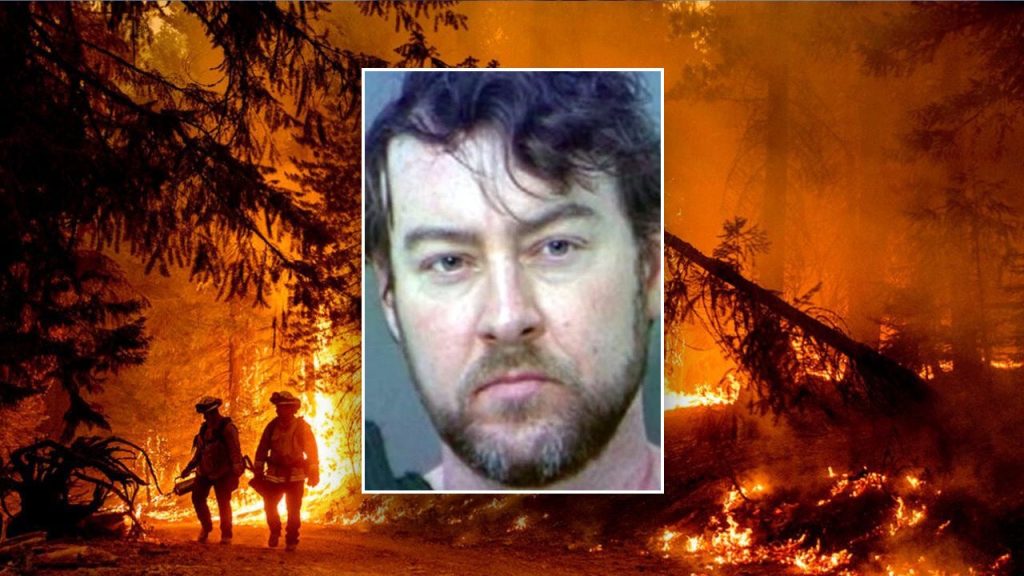Former college professor Gary Stephen Maynard, 49, was sentenced to more than five years in prison for starting four fires in 2021, including the Cascade and Everitt fires on July 20 and 21, and the Ranch and Conard Fires on Aug. 7. Maynard, of San Jose, pleaded guilty to three counts of arson on federal property as part of a plea deal. The fires were set behind crews battling the Dixie Fire, one of the largest wildfires in California history, threatening the lives of firefighters and potentially cutting off their escape routes. The U.S. Attorney’s Office emphasized the danger Maynard posed by intentionally setting fires during one of the worst fire seasons in history.
Forest Service agents began investigating Maynard on July 20 after the Cascade Fire was reported on the western slopes of Mount Shasta. They found Maynard under his black Kia Soul, living out of his vehicle at the time. A second fire erupted the next day on Mount Shasta, and investigators found tire tracks similar to those made by the Kia. They placed a tracking device under Maynard’s car, confirming he had traveled to the area where the Ranch and Conard Fires erupted in the Lassen National Forest. Maynard’s attorney stated in sentencing memorandums that he was suffering from untreated mental health issues when starting the fires and has sought treatment since then.
Maynard had been an adjunct faculty member at Santa Clara University and had also taught criminology and sociology at Chapman and Sonoma State Universities. Specializing in criminal justice, cults, and deviant behavior, Maynard’s colleagues reported his struggles with anxiety, depression, split personalities, and suicidal ideation. He was sentenced to 63 months in prison, three years of supervised release, and ordered to pay restitution as part of his plea agreement. The Dixie Fire eventually scorched over 1,500 square miles of land, destroyed over 1,000 structures, and cost more than $610 million over three months to bring under control, marking the most expensive fire in California history.
U.S. Attorney Phillip Talbert condemned Maynard’s actions, stating that he deliberately made a dangerous situation more perilous by starting fires behind firefighters battling the Dixie Fire. Maynard’s intentional arson spree on federal land posed a significant threat during a catastrophic fire season. Assistant U.S. Attorney Michael Anderson detailed Maynard’s entry into evacuation zones to set fires, endangering first responders and complicating firefighting efforts. Maynard’s quick arrest and prosecution were credited to the swift response by the U.S. Forest Service and civilian witnesses who helped extinguish the fires before they could cause further damage.
Maynard’s guilty plea to three counts of arson on federal property resulted in his imprisonment and supervision upon release. The fires he started behind firefighting crews battling the Dixie Fire were extinguished before causing any building destruction. Maynard’s attorney emphasized his untreated mental health issues at the time of the arson attacks and subsequent efforts to seek treatment. The Dixie Fire, which began on July 13, became one of California’s largest wildfires, impacting multiple national forests and counties. Maynard’s sentencing reflects the severity of his actions during a critical fire season in the state’s history.
In conclusion, former college professor Gary Stephen Maynard’s sentencing to over five years in prison for starting four fires on federal property highlights the gravity of intentionally setting fires during a catastrophic wildfire season. Maynard’s actions behind firefighters battling the Dixie Fire posed a serious threat to their safety and firefighting efforts. The swift response by investigators, the U.S. Forest Service, and civilian witnesses helped prevent further damage from the fires Maynard started. Maynard’s mental health struggles were cited as a contributing factor to his arson spree, leading to his imprisonment, supervised release, and restitution payments. The impact of the Dixie Fire on California’s landscape, structures, and finances further underscores the severity of Maynard’s crimes.


